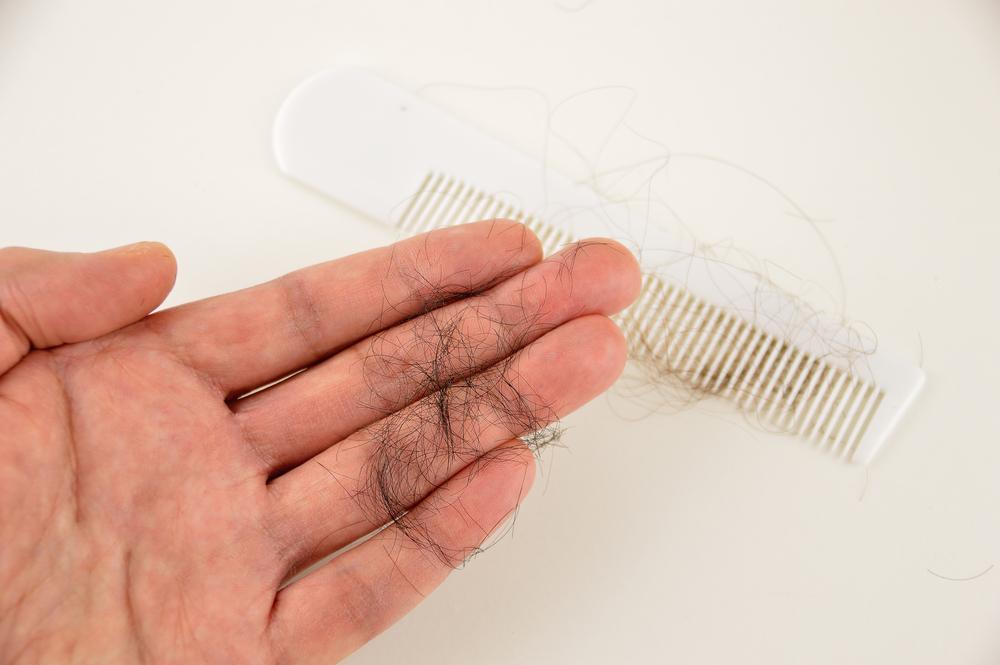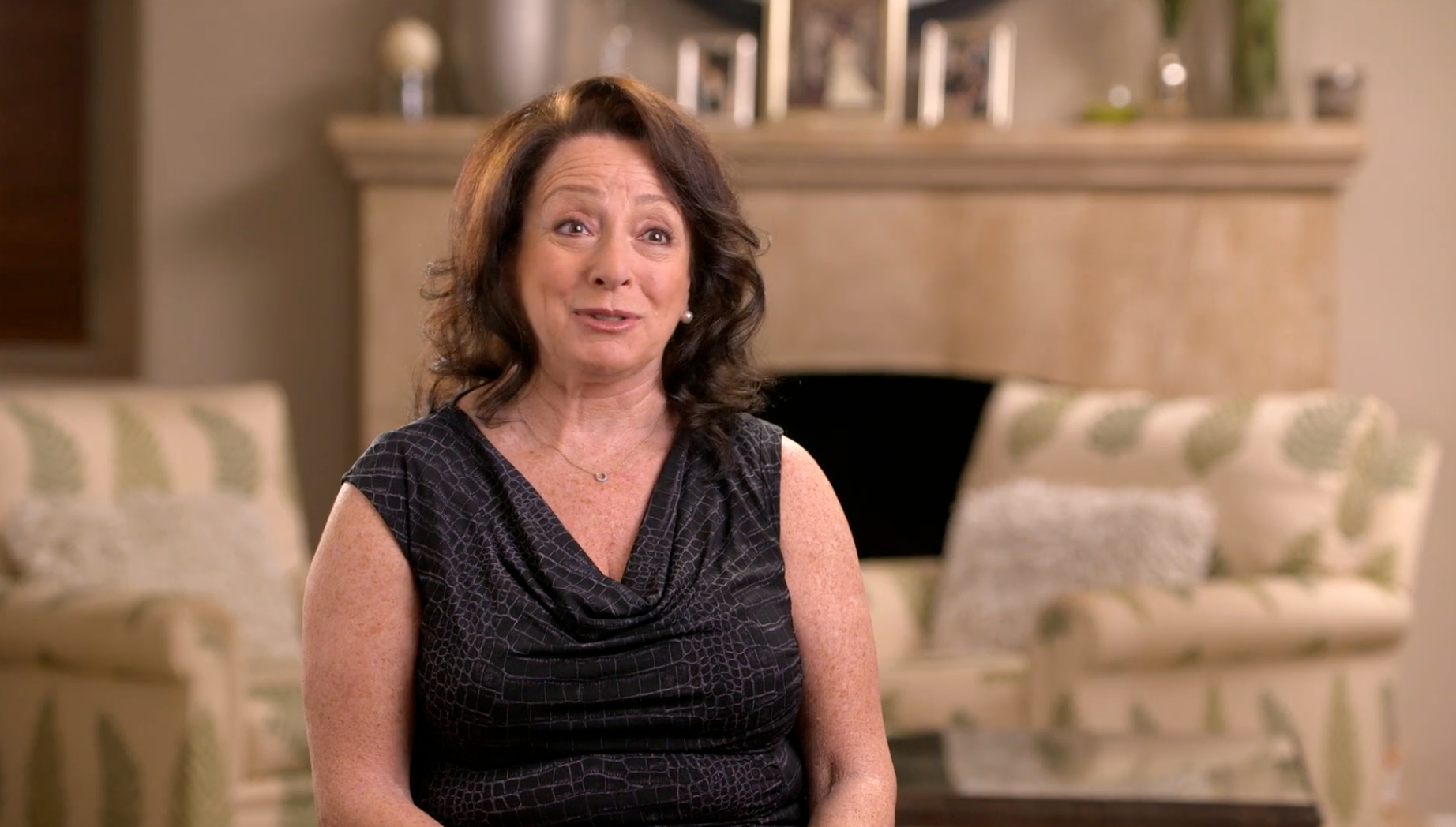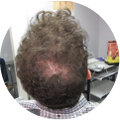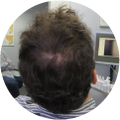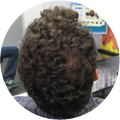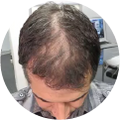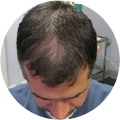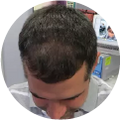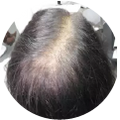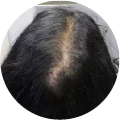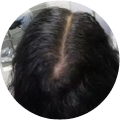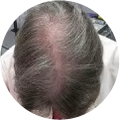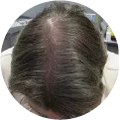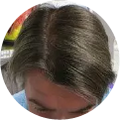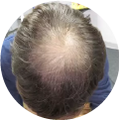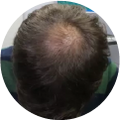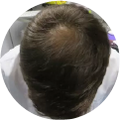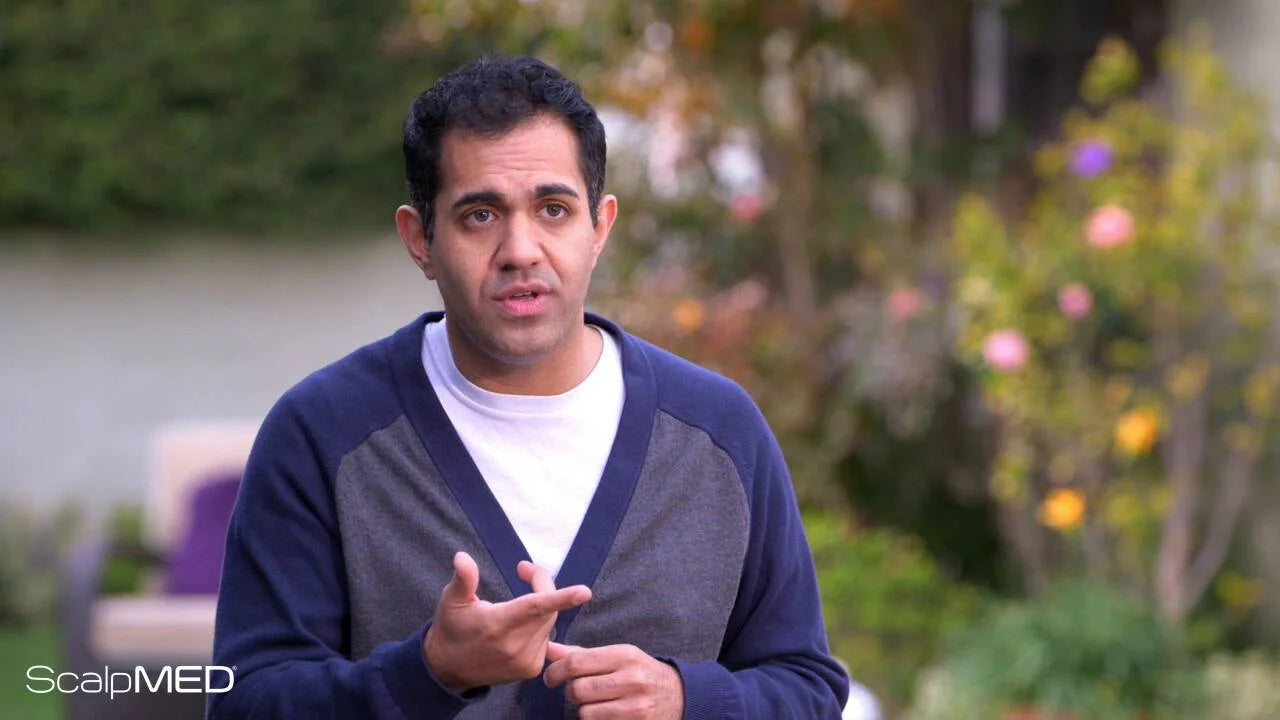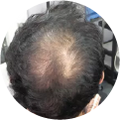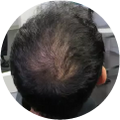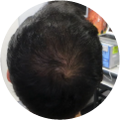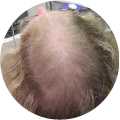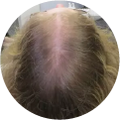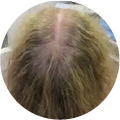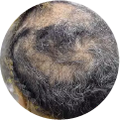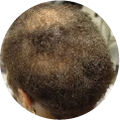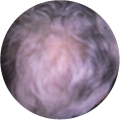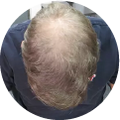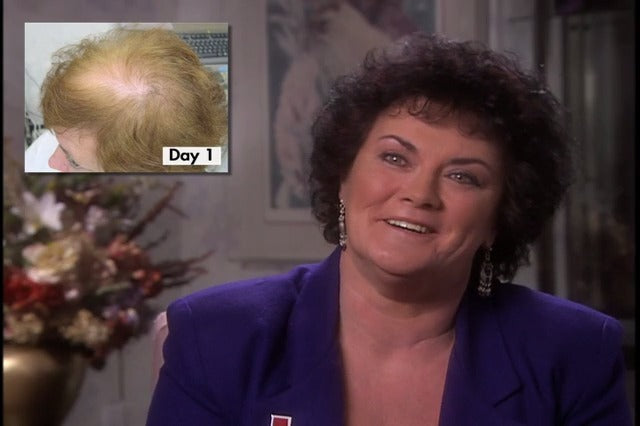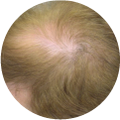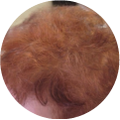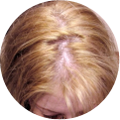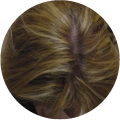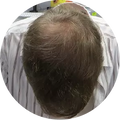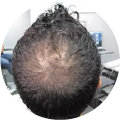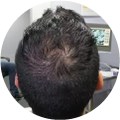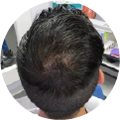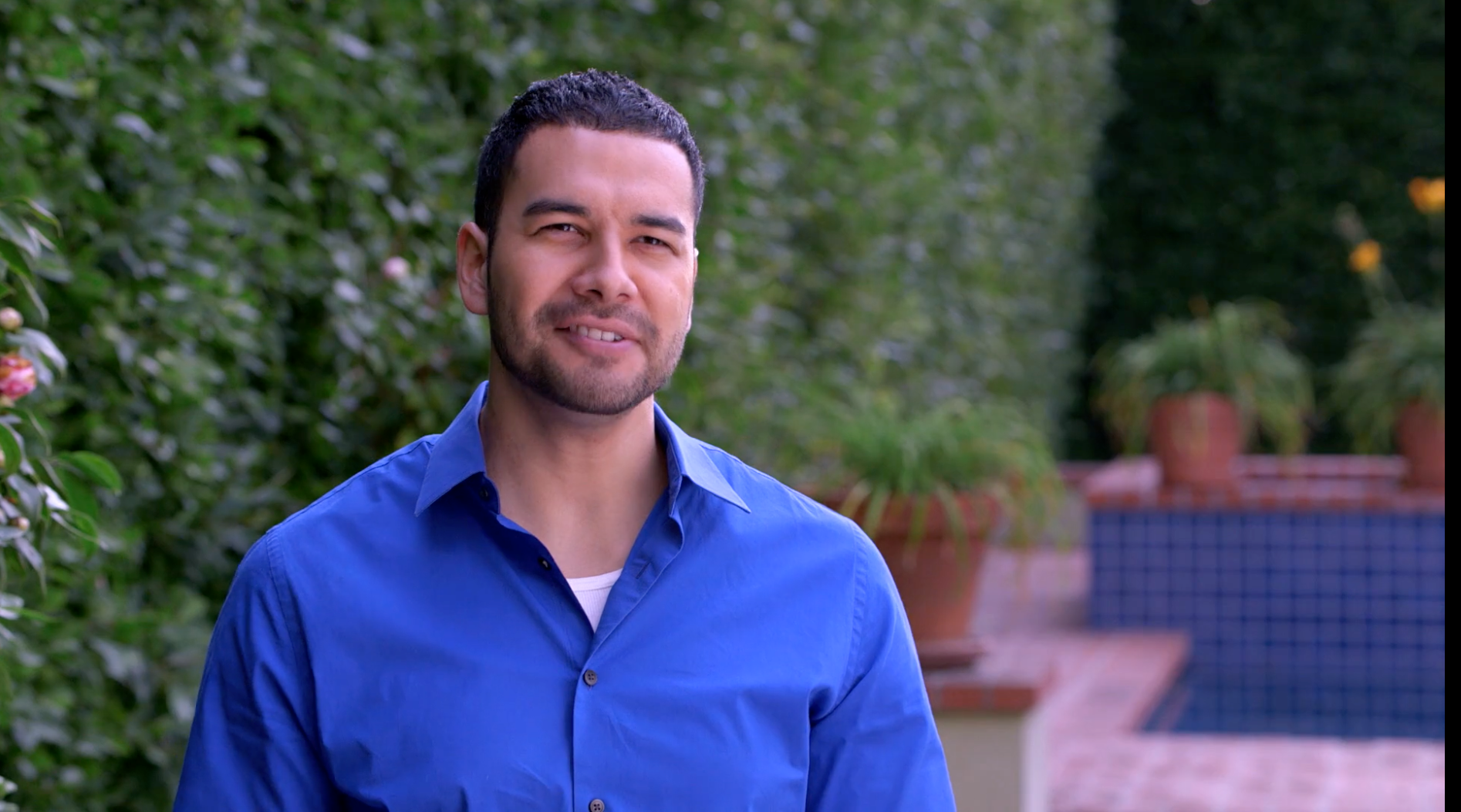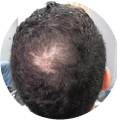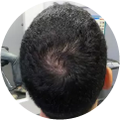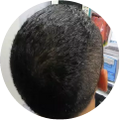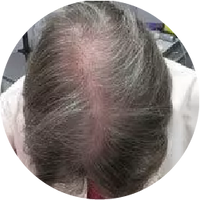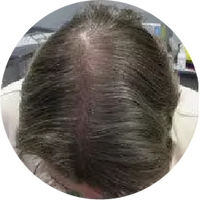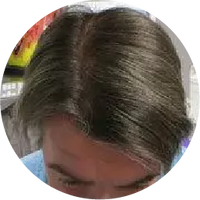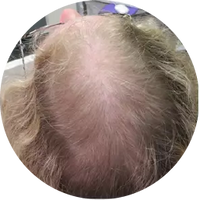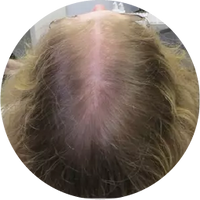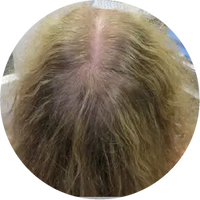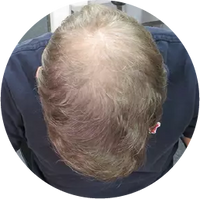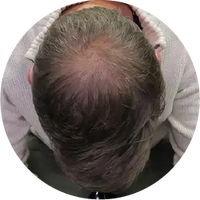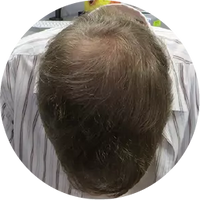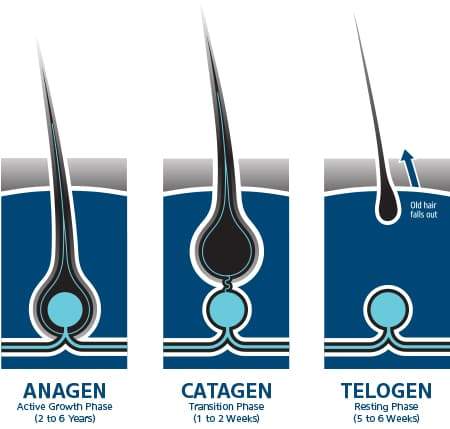
Telogen Effluvium is a condition many individuals suffer from, but there remains a widespread lack of understanding surrounding what Telogen Effluvium is, the potential causes, and how to seek treatment and begin Telogen Effluvium regrowth. There are any number of disparate Telogen Effluvium stories documenting causes, Telogen Effluvium regrowth signs, and potential treatment options to adopt to reverse hair thinning due to Telogen Effluvium. To understand what Telogen Effluvium is, and how it disrupts the hair growth process, it is first necessary to understand the normal processes hair undergoes as it grows, and how Telogen Effluvium strays from this process.
The Phases of Hair Growth

The hair growth cycle consists of three main phases of growth and shedding. These stages are known as Anagen, Catagen, and Telogen. Below is a breakdown of what occurs during each of these three phases.
-
Anagen:
Anagen is the longest phase of the hair growth cycle with a duration of two to six years. The duration of the Anagen varies between individuals and hair follicles, as even on the same person each hair may have a different length of the Anagen phase. Anagen is the active phase of the hair growth cycle during which the cells that make up the root at the base of the hair are dividing continuously and rapidly. This continual process of division produces new hair that is pushed to the surface. This new hair is replacing a club hair, which is a hair that is no longer in the Anagen growth phase and will no longer grow. During the Anagen phase, the hair will grow approximately one centimeter every twenty-eight days. The duration of an individual’s average active growth phase will determine the terminal length of hair they can achieve, or how long their hair will be capable of growing before it stops. For some, their terminal length may be above their shoulders, which would indicate a short active growth phase. For others, their terminal length may be to their waist, which indicates a long active growth phase.
-
Catagen:
Catagen is the transitional phase of the hair growth cycle. A relatively small percentage of the hair on your scalp at any given time is in the Catagen stage. On average, three percent of all hairs are in this phase at a time. The Catagen phase typically occurs for a duration of two to three weeks. During this phase, the active growth phase ceases and the outer root sheath shrinks and attaches to the root of the hair. This is the process by which a club hair is formed.
-
Telogen:
Telogen is the resting phase of the hair growth cycle. At any given time, eight to ten percent of all the hairs on your scalp are in the Telogen stage. On average, the Telogen phase occurs for one hundred days. During the Telogen phase, the hair follicle is no longer growing and is instead merely at rest. The Telogen phase marks the completion of the club hair formation. On average, twenty-five to a hundred Telogen hairs is naturally shed from the scalp each day.
How Telogen Effluvium Disrupts Hair Growth

A variety of hair loss conditions garner the moniker “effluvium,” which means that there is an outflow of some sort. For Telogen Effluvium, this outflow indicates an impaired Telogen phase of the hair growth cycle. Telogen Effluvium is one of the most common forms of hair loss experienced by individuals. Despite its prevalence, there exists very limited research about how Telogen Effluvium works and how causes of Telogen Effluvium are linked. For the average person with healthy hair growth, roughly ninety percent of the hairs on the head will be in the Anagen, or active growth phase, at any given time. As mentioned above, the percentage of hairs in the Telogen phase should range between eight to ten percent roughly, which is a relatively small percentage. However, Telogen Effluvium defies these normal processes. In its simplest form, Telogen Effluvium occurs when there is a noticeable change in the number of hair follicles growing hair. When the number of hair follicles producing, hair drops significantly during the Telogen, or resting phase, there will be a marked increase in dormant, resting hair follicles in the Telogen phase. When hair follicles enter the Telogen phase the body allows them to remain for a short time before shedding them. When an individual experiences Telogen Effluvium, they are experiencing hair shedding or hair loss due to the increased number of resting hair follicles.
Telogen Effluvium is usually recognized by a thinning of the hair on the scalp. The thinning of the hair may or may not occur evenly across the scalp, and may be more severe in some areas. In most cases, the hair at the crown, or top, of the scalp experiences more thinning than on the sides and the back of the scalp. Telogen Effluvium does not often result in the recession of the hairline, except for in rare and chronic manifestations. The hairs that are shed are most often Telogen hair follicles. When experiencing Telogen Effluvium, an individual will never undergo a full loss of all hairs of the scalp; however, in severe cases, the hair thinning may be very noticeable. In rare cases, Telogen Effluvium can affect other areas outside of the scalp, such as the eyebrows. In any form Telogen Effluvium takes, it is fully treatable and reversible. The hair follicles have not been irreparably damaged or changed in any way, there is just a higher number of hair follicles in the resting state at one time than there should be during a normal hair growth cycle.
The Three Ways Telogen Effluvium Can Develop
- One of the most common ways Telogen Effluvium develops is a reaction to an environmental event that shocks the hair growth cycle significantly enough to induce hair follicles entering the resting state. This type of Telogen Effluvium often develops rapidly and becomes noticeable after as little as one to two months. As with other developments of Telogen Effluvium, the experience of this traumatic event, and subsequent increase in resting hair follicles results in increased hair shedding and thinning on the scalp. If the event that triggered the onset of Telogen Effluvium does not last long, it will generally reverse itself rather quickly and hair follicles will return to their normal growing state in which they produce new hair follicles. This is known as Telogen Effluvium hair regrowth. However, if the trigger event lasts for an extended period, this development cycle of Telogen Effluvium may last quite a bit longer. On average, this form of Telogen Effluvium has a duration of fewer than six months. Most individuals that suffer from this form of Telogen Effluvium regain their normal scalp hair density again within one year’s time.
- The second form of Telogen Effluvium does not have the same quick appearance and return to normalcy as above. Instead, this form develops slowly over time and requires a longer duration to return to a normal scalp hair density. In this form, the hair follicles will likely not all shed their hair fibers and enter a resting Telogen state. Rather, the hair follicles will enter the Telogen phase as they normally would, but will stay in the Telogen phase much longer than they normally would. This process results in the slow accumulation of Telogen state hair follicles, thereby resulting in a steady decline in Anagen hair follicles growing hair. The hair shedding may not be as apparent or significant in this form of Telogen Effluvium, but individuals will most likely experience a slow thinning of the hair on the scalp. This form of Telogen Effluvium most often occurs in response to a consistent stressful factor or event. This can result in Chronic Telogen Effluvium; regrowth may not occur rapidly during this form.
- The third form of Telogen Effluvium occurs when hair follicles do not remain in the resting, Telogen phase, but rather experience shortened hair growth cycles. This form of Telogen Effluvium results in thinned scalp hair and a consistent shedding of short, bristly hair fibers.
Causes of Telogen Effluvium
The causes of Telogen Effluvium vary greatly between individuals but below are a few of the most common causes to trigger Telogen Effluvium.
-
Hormonal Changes:
A variety of different hormonal changes can jar the body enough to catalyze it into Telogen Effluvium, but one of the most common hormonal changes to trigger this condition is after a woman gives birth. Due to the range of hormones experienced before, during, and after birth, many women develop Telogen Effluvium due to the sudden change in hormone levels after giving birth. This type of hair loss is also sometimes referred to as postpartum alopecia. For many women experiencing Telogen Effluvium after giving birth, their hair growth processes return to normal quickly as their hormone levels become regulated again.
-
Stressful Trigger Event:
Stress is one of the most pervasive and dangerous feelings a human being experiences, and depending on the severity of the stress, it can disrupt normally bodily processes. Sometimes when an individual experiences a stressful trigger event, the body undergoes a shock that induces a portion of the hair follicles on the scalp to enter the resting state. Hair loss or hair shedding occurs because of this increase in resting hair follicles, but often remedies itself shortly after the trigger event passes and the extreme stress subsides. A stressful trigger event can be any number of things, and depends entirely on the unique complexities of the individual and their environment. Examples of a stressful trigger event include physical trauma, loss of a loved one, major surgery, or excessive and rapid weight loss.
-
Diet:
Diet provides the food that your body needs to grow new, healthy hair follicles. For some, dietary deficiencies can induce Telogen Effluvium due to a lack of essential vitamins, nutrients, and amino acids. Depending on the deficiency, this cause of Telogen Effluvium is most often corrected with a change in diet, the use of supplements, or a combination of both.
-
Disease:
Telogen Effluvium can develop on its own, or in some cases, as a byproduct of a disease or chronic condition. The early stages of Androgenic Alopecia, which is also known as male-pattern baldness or female-pattern baldness, are identical to Telogen Effluvium. In addition to this manifestation, Telogen Effluvium is also sometimes a symptom of other conditions, such as Alopecia Areata, which is an inflammatory condition. Thyroid disorders have a significant impact on hair follicles as well, which results on approximately one third of those suffering from a chronic thyroid condition developing Telogen Effluvium.
Treatments for Telogen Effluvium
The correct treatment for Telogen Effluvium varies based on the form of Telogen Effluvium and the event that catalyzed its onset. Despite this, there are a variety of overarching treatments commonly recommended for Telogen Effluvium. Below are a handful of the best treatments for those suffering from Telogen Effluvium.
-
Adopt a Healthy Diet:
Diet is an extremely common determining factor when analyzing hair loss, and one of the best tactics to take when experiencing any kind of hair loss is to adopt a healthier diet that is rich in foods known to stimulate healthy hair growth. There are many foods known to be beneficial to promoting healthy hair growth, so by including them in your daily routine, you are one step closer to hair regrowth.
-
Stress Reduction:
A trigger event may cause extreme stress that induces Telogen Effluvium, but the longer that stress remains the more significant the hair thinning will be and the longer the duration will be before hair begins to regrow. If a stressful event causes Telogen Effluvium, it is vital to develop a healthy method for dealing with the stress in your life to return your body to a state of normalcy from which it can produce new hair follicles. Your body needs balance and calm to function correctly, so be sure it has what it needs to begin hair regrowth.
-
Use ScalpMed:
ScalpMed is a proven-effective regimen for combatting both male and female hair loss and hair thinning. ScalpMed utilizes a unique 2-step process not found in any other hair regrowth treatment. The ScalpMed process combines NutriSol, a multi-patented pretreatment technology, and Vitadil, a clinical-strength Minoxidil-based treatment formula.
The post Telogen Effluvium Hair Regrowth appeared first on Scalp MED.




